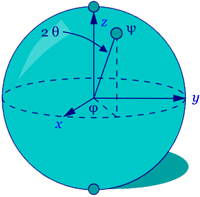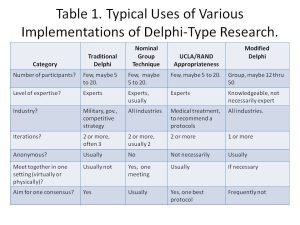Triangulation in research is a lot the old technology of geometry and surveying where you take the distance from three known points to compute the exact location on a map… Give or take a few yards. LORAN technology using radio signals and such was used in WWII. With a LORAN in the gulf, I remember being able to find where we were on a sail boat, approximately. The problem was that we were in an area of the Gulf of Mexico with only two LORAN readings. Three, you can triangulate, two you can approximate.
Triangulation in Academic Research is the kind of stuff you can possibly do to augment your Qual study. As discussed other places, Delphi Studies might need to be recharacterized as Mixed method if some of the research is sufficiently quantitative, i.e., if second round has a lot of respondents and it makes sense to do stats, like correlation on several variables.
So, in any qual study, you might consider including triangulation. There are a few types of triangulation (depending on your source) but let’s focus on just two: data and lit/theoretical. Data would be if you could find published statistics in the area that would allow for some corroboration of the findings from the study. In terms of data, maybe some stats that give an estimate of the independent and/or dependent variables (predictor and predicted variables in QUAL world). Possibly even the intersection of the two. Does the available data align with the findings of the study?
Internal data to a study should be kept separate from external data triangulation. In Delphi studies, for example, there might be an alignment of the more general findings from round 1 and rankings of round 2. This offers up internal consistency.
One of the coolest, and potentially strongest, aspects of triangulation is literature (or theory) triangulation. Does the existing literature align with some of the key themes found in your QUAL study. Think of this as a meta-study lite. For a meta study, there needs to be a lot of research, and a deep dive into the existing research can allow for a table of results that support, don’t support, or disprove various themes.
Here is a very interesting approach for triangulation within a Delphi study (Hopf, Francis, Helms, Haughney, & Bond, 2016). Find the article here at BMJopen. For past studies that did not address a specific topic, they used a bazaar label of “Silence”, as in not addressed in the specific study. A better label would probably not addressed (n.a.). (The implication of silence is that the authors intentionally avoided that specific issue in their study.)
So, consider including one of the 4 or 5 types of triangulation in your qual study to strengthen the support for your findings (or to highlight divergent findings). For the regular researcher (say dissertation), consider simply doing meta analysis, and avoid all that messy questionnaire stuff, if the field is full of existing research.
If you use Delphi, you will be able to project into the future. You can explore how some of the themes identified in the research grow or wane in an uncertain future, and what conditions (triggers) might initiate major future disruption, i.e., scenario analysis.
References
Hopf, Y. M., Francis, J., Helms, P. J., Haughney, J., & Bond, C. (2016). Core requirements for successful data linkage: an example of a triangulation method. BMJ Open, 6(10), e011879. doi:10.1136/bmjopen-2016-011879 Retrieved from: http://bmjopen.bmj.com/content/6/10/e011879

